News
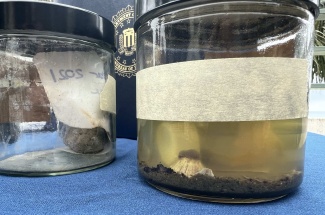
Participating in a federal investigation was not on UC Santa Barbara marine biologist Mark Page’s agenda back in 2021, but after he got the call from the Coast Guard that October, he became part of a “dream team” of scientists and investigators that unraveled the mystery behind a spill that coated Huntington and Newport beaches with about 25,000 gallons of crude oil.
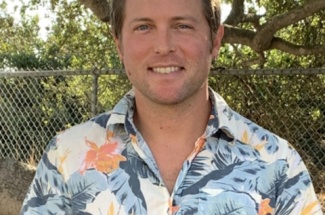
As our environment changes so, too, does the way in which diseases spread. That’s why UC Santa Barbara’s Andy MacDonald plans to investigate how changing trends might impact vector-borne diseases. MacDonald has just received a $1 million CAREER Award from the National Science Foundation to study the ecology of West Nile virus in California’s Central Valley over five years. Part of the project also includes collaboration and outreach with Bakersfield College and Central Valley communities.
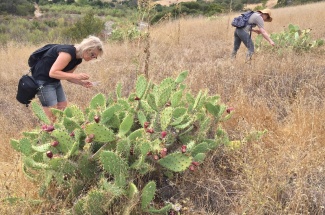
Despite their casting as problem species, invasive plants often hold deep ties to historical events and customs. A yearning to better understand their relationship to one specific ecosystem, the land and human life led artist Lisa Jevbratt to study their color and material properties.
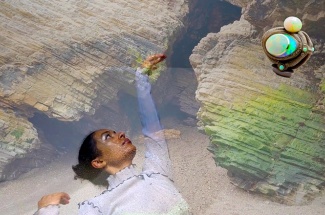
Artists in the Master of Fine Arts program will present their thesis projects at the Art, Architecture & Design Museum, May 17–June 9. The show’s theme, “Incandescent,” references Michel Serres and an emphasis on the interconnectedness of humans and nature, and their shared unfolding history.Participating artists are Panteha Abareshi, Diego Melgoza Oceguera, Dannah Mari Hidalgo, Hope Okere, Lyra Purugganan, Mariana Rodela and Lela Shahrzad Welch.
“Over the course of their studies at UCSB, the Department of Art’s 2024 Master of Fine Arts thesis class have developed bodies of work that reify and undermine contemporary discourses around place and displacement,” said Alex Lukas…

Finding reliable, eco-friendly power sources is crucial as our world grapples with increasing energy needs and the urgent call to combat climate change. Solar energy offers one solution, with scientists devising ever more efficient materials for capturing sunlight.
Perovskite solar cells have emerged as a promising alternative to conventional, silicon solar cells, boasting a number of advantages. But processing the material has been a complicated affair. Now, researchers at UC Santa Barbara have developed a method to make high-quality perovskite films at room temperature.
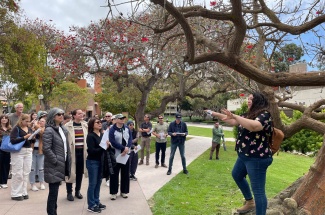
Beauty is all around us at UC Santa Barbara, but for Cameron Hannah-Bick a highlight is the campus vegetation.That became very clear on the midday “Very Important Tree Tour" she led in April, fittingly scheduled between Earth and Arbor Days.
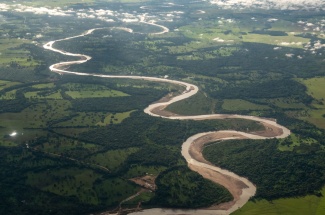
Just as water moves through a river, rivers themselves move across the landscape. They carve valleys and canyons, create floodplains and deltas, and transport sediment from the uplands to the ocean.
A new paper out of UC Santa Barbara presents an account of what drives the migration rates of meandering rivers. The two authors compiled a global dataset of these waterways, analyzing how vegetation and sediment load effect channel movement. “We find a global-scale trend between the amount of sediment that rivers carry and how quickly they’re migrating, across all variables,” said lead author Evan Greenberg, a doctoral student in the Department of Geography.
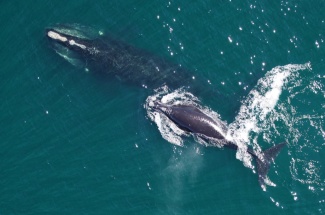
The endangered North Atlantic right whale is about to get some much-needed help from UC Santa Barbara scientists, in the form of a vessel tracking tool that reveals in near real-time the speeds at which cargo ships move up and down the North American East Coast. A component of Whale Safe, a program developed by the Benioff Ocean Science Laboratory (BOSL) at UCSB, the publicly available vessel analytics tool allows resource managers, conservationists, shipping companies, retailers and the public in general to see whose cargo ships are speeding through waters through which these and other whales may be traveling.
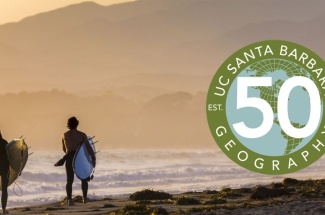
UC Santa Barbara’s Department of Geography celebrated its 50th anniversary this year. The department got its start in 1963 as a program in the College of Letters and Science. The major was launched in February 1966, and its first degree was granted that June. But the discipline was languishing by 1973, when Bruce Rickborn became associate dean of letters and science. Rickborn conducted a survey of geography departments around the country, which painted a dim prognosis.
UC Santa Barbara researchers launch CoastSnap, citizen science initiative to monitor coastal changes
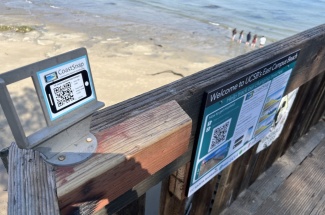
It’s a simple device but it can do so much: A photo cradle, installed on the steps leading to and from East Campus Beach. The monitoring device invites citizen scientists to document the beach’s many faces. It’s the first installation in Santa Barbara County of theCoastSnap project, a global effort to keep watch on the coasts as they change over time. Developed by researchers in Australia primarily to assess beach width, the project has found its way across the globe and will benefit the local community in several ways.